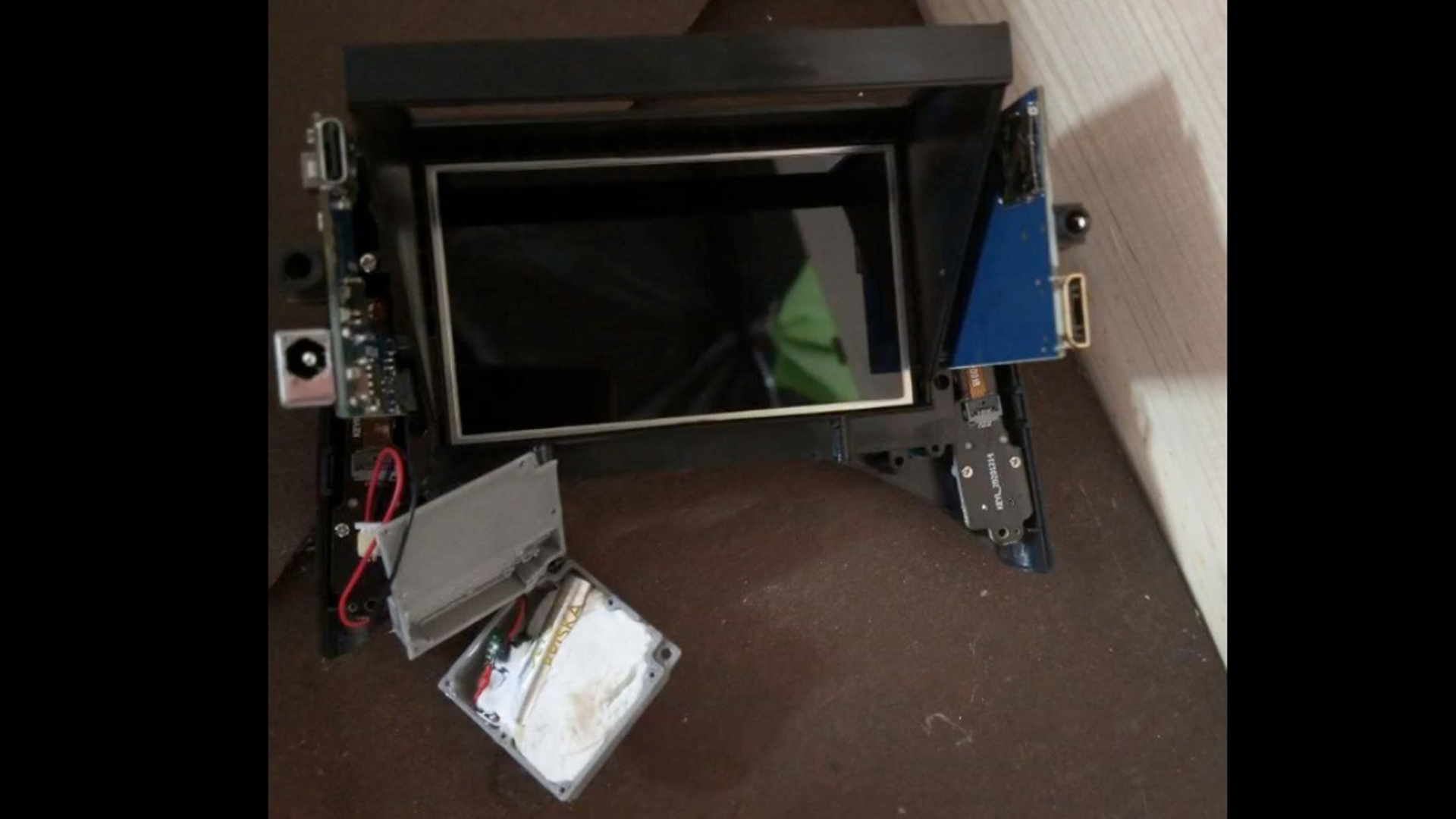Russian drone operators reportedly received explosive headsets — plans dashed by packaging
Clear evidence of package tampering alerted the Russians.

Russia’s invasion of Ukraine has seen the widespread use of drones on both sides and now it seems that the supply chain for these units is being targeted as well. According to The War Zone, FPV goggles destined for Russian drone operators on the front line were found to have explosives buried inside them. These were set to detonate once the unit had been turned on, injuring and potentially incapacitating, or killing, the drone pilot.
These goggles reportedly contained a small amount of plastic explosive — about 10 to 15 grams — but its placement near the temple of the operator makes it quite deadly. Since they were set to detonate once the goggles had been activated, it almost certainly guarantees that a drone pilot might have been wearing them when the explosive charge detonated.
🇷🇺⚔️🇺🇦 Straight from the Israeli Playbook: Russia Intercepts Explosive-Laden AR Goggles Meant for Frontline TroopsRussian authorities have intercepted a shipment of FPV goggles rigged with explosives, allegedly intended to detonate upon first use.According to Russian war… pic.twitter.com/brmncNweZtFebruary 7, 2025
The booby-trapped items in question are FPV Skyzone Cobra goggles acquired from China by reportedly unwitting volunteers, and they were transported into the country via the Russian parcel service SDEK. The operation was thwarted because the Russian military noticed the packages were seemingly tampered with, showing signs of being opened. Upon closer inspection, it was noticed that the FPV goggles looked like they had been previously opened, which led to the discovery of the hidden explosives. Perhaps the cunning saboteurs should have invested in a shrinkwrap machine.
This sabotage attempt mirrors the operation that Israel conducted against Hezbollah last year. The Middle Eastern nation was able to infiltrate the supply chain and insert explosives in both pagers and handheld radios that were set to detonate upon command. However, this was a far more sophisticated attack, as the explosives were set off remotely, not when the device was turned on for the first time. Furthermore, there were no signs of tampering on the devices, so the sabotage was likely done in a facility that had the proper tools for modifying them.
Russians complain about receiving humanitarian aid with explosives – FPV drone goggles that explode upon activation. Inside, an explosive device was found, discovered only during use. pic.twitter.com/rQG5WoXVNNFebruary 7, 2025
Russian authorities are now investigating the matter, trying to determine where the shipment was compromised and who is involved. But even though the purported operation failed because it was discovered before it caused any injury or real damage, it would still have some psychological impact, especially as frontline troops now also must worry about their equipment exploding and turning them into casualties.
You will likely not have to worry about booby-trapped electronics in your everyday gadgets, especially if you’re not in a warzone. But events like this show how a bad actor or adversary could tamper with devices to compromise security. Even something as small and innocuous as a charging cable could host some hidden sinister electronics, showing how information and physical security are so intertwined in our modern world.
Stay On the Cutting Edge: Get the Tom's Hardware Newsletter
Get Tom's Hardware's best news and in-depth reviews, straight to your inbox.

Jowi Morales is a tech enthusiast with years of experience working in the industry. He’s been writing with several tech publications since 2021, where he’s been interested in tech hardware and consumer electronics.
-
Zforgetaboutit para 1: "These were set to detonate once the unit had been turned on, injuring and potentially incapacitating, or killing, the drone pilot."Reply
para 2: "Since they were set to detonate once the goggles had been activated, it almost certainly guarantees that a drone pilot might have been wearing them when the explosive charge detonated."
I expect better article conciseness, not padding, as seen here. -
Heiro78 Reply
I see the incongruity, but when I read the first one. I didn't think about when it was first powered on but instead when it gets worn. I've only got experience with meta quest 2 but figured they would have something setup for when the internal screen lights up which usually happens when the headset detects being worn.Zforgetaboutit said:para 1: "These were set to detonate once the unit had been turned on, injuring and potentially incapacitating, or killing, the drone pilot."
para 2: "Since they were set to detonate once the goggles had been activated, it almost certainly guarantees that a drone pilot might have been wearing them when the explosive charge detonated."
I expect better article conciseness, not padding, as seen here. -
OneMoreUser Weird it is reported the drones were humanitarian support.Reply
But no matter as I am sure the packaging issues will be solved, so that in future shipments the intended uses will enjoy the full feature sets of the FPVs.
Opening and repacking isn't easy. It may the best to simply redo it rather than try to fix necessary tears and the like.